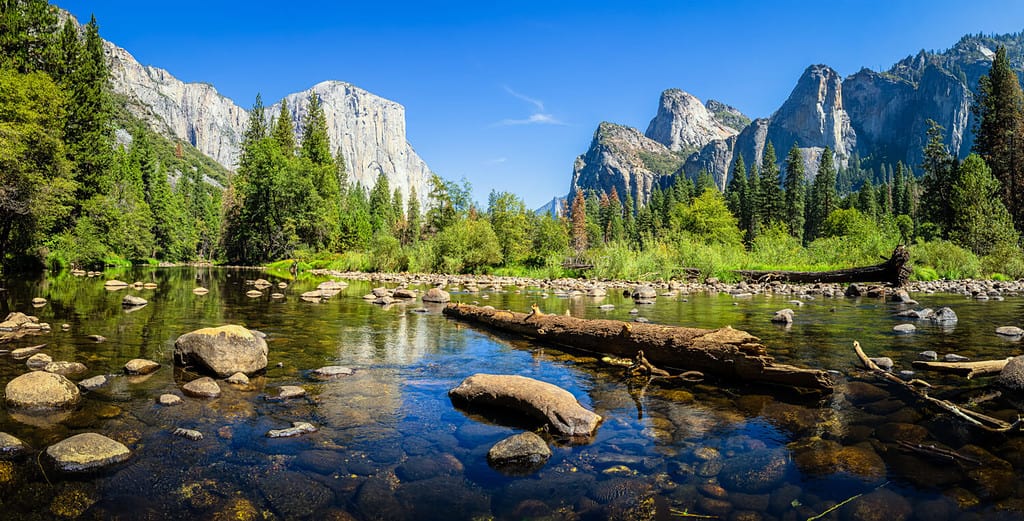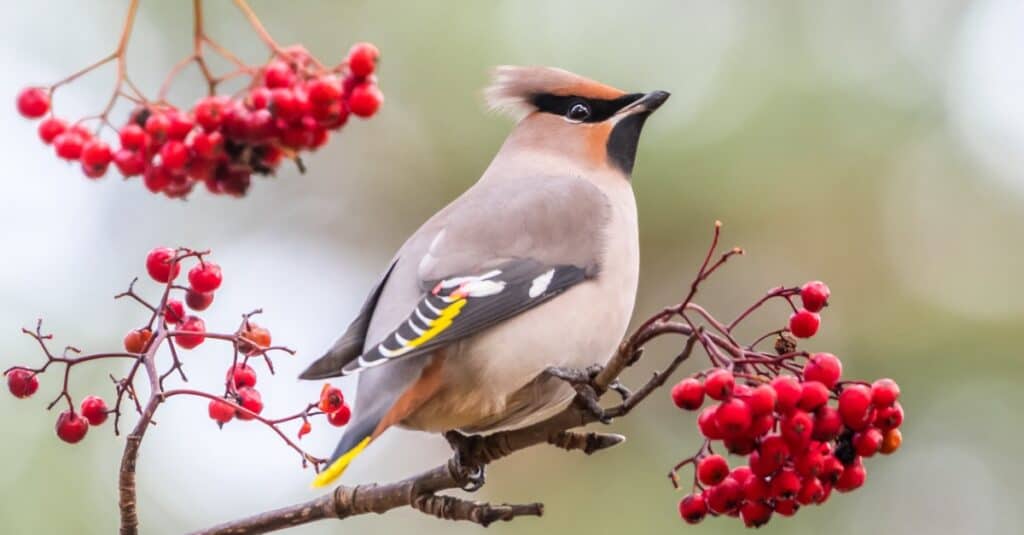In 1806, a Spanish explorer, Gabriel Moraga, and his group of colonists arrived on the south bank of the Merced River low on supplies and extremely thirsty. Stumbling upon the river, Moraga christened it the Rio de Nuestra Señora de la Merced. It means “River of Our Lady of Mercy” because it gave them water just in the nick of time. And, even though Moraga’s expedition explored much of the lower section of the river, they never traveled its full length. Find out how long the Merced River is from start to end.
How Long Is the Merced River Start to End?

Despite its partial status as a National Wild and Scenic River, the Merced River has many dams and irrigation diversions.
©Nyokki/Shutterstock.com
The Merced River is 145 miles long from the source to the mouth. That’s about half as long as the Grand Canyon, which is 277 miles long. The Merced River winds through a glacially carved canyon on the southeastern corner of Yosemite National Park. It continues flowing west for 145 miles until the mouth, located at the San Joaquin River, the third longest river in California.
Course Through California
The Merced River begins on the south side of Mount Lyell, the highest point in Yosemite National Park. Forming from the confluence of the Triple Peak Fork and Merced Peak Fork, the Merced River generally flows westward, where it weaves through canyons and gorges before it cascades over a granite cliff into Little Yosemite Valley. From there, the river spills over the “Giant Staircase,” the nickname of the Nevada and Vernal Falls. Then, the river snakes through the Yosemite Valley before joining the South Fork Merced River, the largest tributary.
Angling northwest where the North Fork joins, the river empties into Lake McClure. From there, it passes through several dams: the New Exchequer Dam, the McSwain Dam, and the Crocker-Huffman Dam. Finally, at Hills Ferry, the mouth of the Merced River empties into the San Joaquin River.
Wildlife

Of the 127 species of birds found along the Merced River, only 35 species may be spotted along its entire length.
©iStock.com/hannurama
According to this 2006 study, there are 37 fish species in the Merced River. Some fish include Sacramento sucker, smallmouth bass, largemouth bass, and anadromous species like chinook salmon, Pacific lamprey, and striped bass.
There are also 127 species of birds, such as the cedar waxwing, ruby-crowned kinglet, and American robin. However, only 35 of the 127 species of birds may be found along the entire length of the river. There are also 140 different species of insects and invertebrates.
Also, in 1986, the area around the Merced River was designated as the Limestone Salamander Area of Critical Environmental Concern. The limestone salamander is a very rare type of amphibian that depends on the limestone walls of the Merced Canyon to survive. This species of salamander is not found anywhere else in the world.
The photo featured at the top of this post is © Wesam Taleb/iStock via Getty Images
Thank you for reading! Have some feedback for us? Contact the AZ Animals editorial team.






